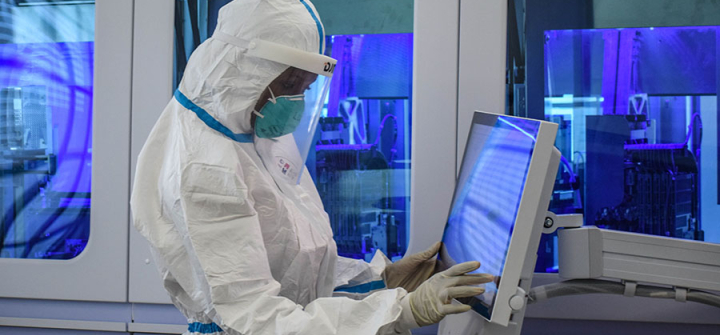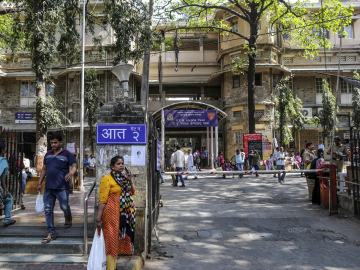New Dashboard Aims to Democratize COVID-19 Data
“While there’s no one-size-fits all approach to solving health emergencies, we do know this: accurate, easily available data is key,” says Jonathan Quick, MD, MPH, managing director of he Rockefeller Foundation’s Pandemic Response, Preparedness, and Prevention Initiative.
And yet countries across the income spectrum have struggled to fill COVID-19 data gaps. In particular, low- and middle-income countries face added barriers to accessing quality diagnostics in the first place, leading to perpetual confusion about the true scope of the pandemic.
The Foundation’s latest tool aims to address that unmet need with a 3-pronged approach designed for LMICs that aims to:
- Demystify the diagnostics landscape in LMICs
- Help countries weigh the pros and cons of available options
- Equip health authorities with the tools they need to strengthen SARS-CoV2 diagnostic supply chains
GHN caught up with Quick and Manisha Bhinge, managing director for Health at The Rockefeller Foundation, about the state of COVID-19 diagnostics and where their dashboard fits into the global COVID-19 response.
How available and affordable are diagnostics and other health care necessities related to COVID-19?
Manisha Bhinge: Unfortunately, supply chain restraints have been near synonymous with this pandemic. If we think back to this past spring, we saw severe disruptions to the global supply chain for diagnostics and other tools used to address Covid-19. Thankfully, production has expanded in the past few months to help keep up with demand. However, this means governments have had to navigate a complicated and evolving market, which has slowed down delivery to people who need them most.
But availability isn’t the whole story. Affordability and accuracy also play a role. For instance, many LMICs are using PCR-based technologies, which are more accurate but less affordable than new antigen rapid diagnostic tests. There’s no perfect solution to testing, but health officials need to have an accurate picture of the testing landscape to decide what works in their local contexts.
Is it true that wealthy countries are buying up all the critical supplies—and paying top dollar—and, if so, what are LMICs doing?
MB: Given the global nature of the pandemic, there has been an unprecedented demand for diagnostics. Unfortunately, this has played out in a predictable fashion: countries with higher purchasing power and manufacturing capabilities have crowded out those with more limited financial means.
However, there are several partnerships emerging that address these inequities in access. The African Medical Supplies Platform and the ACT-A Diagnostics are two examples of collaborations that seek to expand access to diagnostics through consolidating buying power and stimulating technological innovation. Here, we see collaboration from a number of stakeholders, including national governments, the WHO and the private sector seeking to ensure countries have access to enough tests, regardless of their purchasing power.
On a more local scale, The Rockefeller Foundation has partnered with leading scientists in India to develop Centers of Excellence that will promote high-quality and affordable diagnostics, enable national self-sufficiency and ensure they are a net contributor to other developing countries. In Colombia, The Foundation is partnering with Universidad de los Andes to apply innovations in artificial intelligence to utilize limited testing supplies as efficiently as possible, enabling additional testing with fewer supplies.
PCR testing requires expensive devices while cheaper, faster antigen testing is much less accurate. How are low-resource countries navigating this reality?
MB: While RDTs initially were less accurate than PCR tests, test manufacturers have been able to achieve higher levels of accuracy with RDTs rolled out more recently. With these advancements, test specifications must be considered in conjunction with potential use cases. For example, widespread deployment for population-based mass surveillance would be near impossible with PCR tests given equipment and logistical requirements, whereas RDTs allow for simpler, less costly on-site testing without expensive equipment. That said, in a hospital setting, if a clinician is deciding whether to treat a patient with a particular course of medication, for example, they may want to use a more accurate PCR test, if available, to confirm diagnosis before prescribing medication.
At the moment, we understand that many countries, such as Guinea and Uganda, are developing RDT roll-out strategies and identifying the circumstances where RDTs could be most useful. For example, would a limited number of tests be best utilized at a port of entry, in testing contacts of known positive cases, or in weekly testing rounds at public schools? These are some of the questions that officials need to contend with given the limited supply of tests and the particulars of disease transmission in their countries. Countries will likely be looking to global best practices and leaning on recommendations from global experts such as those at WHO, FIND, PAHO, and Africa CDC.
What gap in the testing landscape does this dashboard fill?
Jonathan Quick: At The Rockefeller Foundation, we believe that testing—combined with adherence to personal protection practices, tracing, and isolation—is our way out of this pandemic. In addition to diagnosing whether a symptomatic individual has COVID-19, testing helps us to understand if asymptomatic individuals have COVID-19. For this reason, it is important that we test proactively and routinely. Moreover, decision-makers can use testing data to understand transmission hotspots and act ahead of a particular outbreak.
To achieve these testing aims, the world needs expanded and equitable access to Covid-19 diagnostics. The LMIC testing dashboard and guidance documentation can help drive progress toward this goal in several ways:
- Bringing clarity to the diagnostics landscape and increasing visibility of the different options available
- Providing interactive tools for countries to understand the pros and cons of available options
- Equipping health authorities with guidance and recommendations so they can integrate these strategies into procurement and deployment plans
The hope is that countries will be able to use the dashboard and supporting documentation to understand the testing landscape, manage the diagnostics supply chain, and get the information they need to identify the specific tests and testing strategies that work best for them—all depending on each country’s local context.
How does this dashboard benefit the overall global response to COVID-19?
JQ: We know that diagnostics are critical to containing the spread of Covid-19, but tests and related equipment are not reaching LMICs, which is putting the lives of the world’s poorest at risk. With our new dashboard, we’re actually democratizing data—breaking down barriers to accessing timely, critical information that could help decision-makers confidently determine next steps.
We can’t leave the most marginalized communities behind if we want to end the pandemic, so this dashboard is really an effort to support an equitable response.
Jonathan Quick, MD, MPH, is managing director of The Rockefeller Foundation’s Pandemic Response, Preparedness, and Prevention Initiative. Manisha Bhinge is managing director for Health Programs and Partnerships at The Rockefeller Foundation.
For the latest, most reliable COVID-19 insights from some of the world’s most respected global health experts, see Global Health NOW’s COVID-19 Expert Reality Check.
Join the 50,000+ subscribers who rely on Global Health NOW summaries and exclusive articles for the latest public health news. Sign up for our free weekday enewsletter, and please share the link with friends and colleagues: https://www.globalhealthnow.org/subscribe
A technician handles samples from truck drivers testing for COVID-19 at the Kenya Medical Research Institute, May 14, 2020. Image: Brian Ongoro/AFP/Getty





